Rickman Rocket III
With Phil Aynsley
For those that like their British motorcycles “sporting” here is an excellent example of the breed. This Rickman Rocket III would be quite a rare machine. Only some 1000 BSA Rocket 3s were built in the final year of production, 1972 (although the motor did live on for a few more years in the Triumph T160) – and this engine number indicates it was from around August of that year. Then the fact that Rickman made very few Rocket III frames (all in ’72) adds to the rarity.
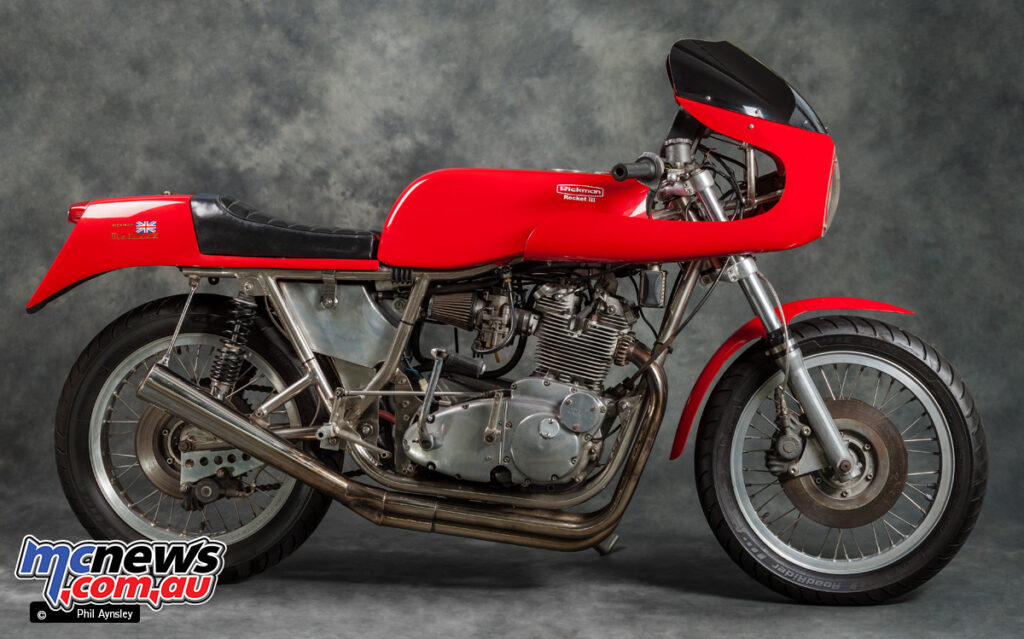
Brothers Don and Derek Rickman began selling motocross frame kits in 1960 then followed up a few years later with road-racing and street designs. Before that they built off-road bikes from a mixture of BSA, Triumph and Norton components. The resulting bikes being named “Metisse”, French for “mongrel”. A very visible trademark of their frames was the nickel-plated finish. The brothers took on a lot of bespoke work, most notably with Weslake in 1972 to produce and sell a eight-valve conversion for the Triumph Bonneville.
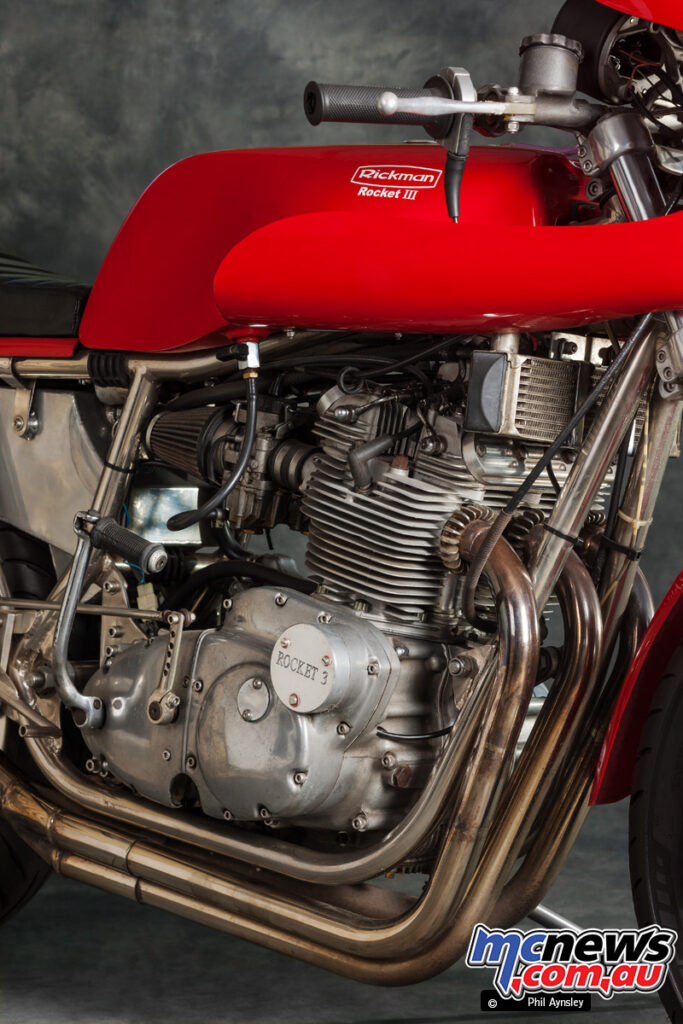
The following year the Rickman Intercepter was released which used some of 200 Royal Enfield 736 cc twin motors they had picked up on the cheap.
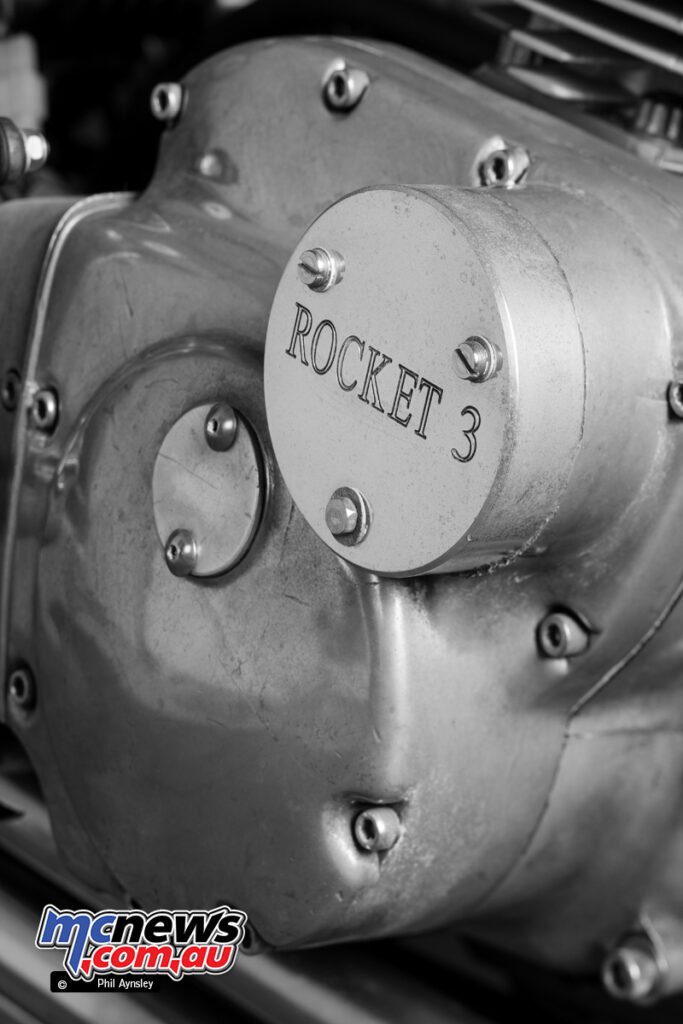
The basic early Rickman frame was made in lower, short wheelbase versions for racing with longer frames for street use. The geometry was pretty much the same with different sized alloy plates used to house various motors such as Norton or Triumph twins.
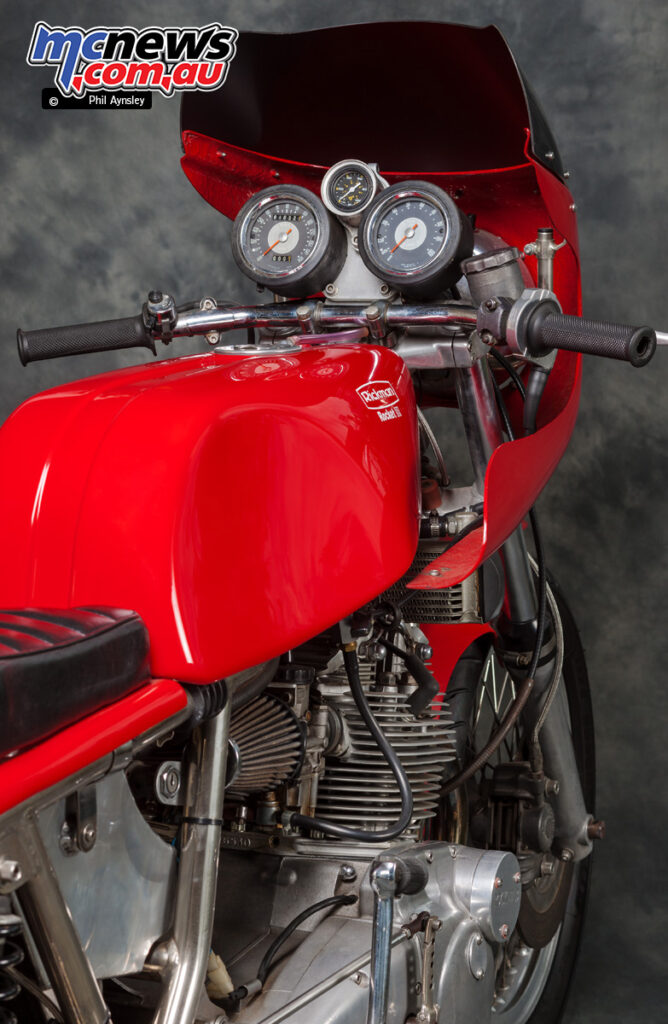
The company then went on to produce fames to house numerous Japanese engines – the Honda CB750 being the best known.
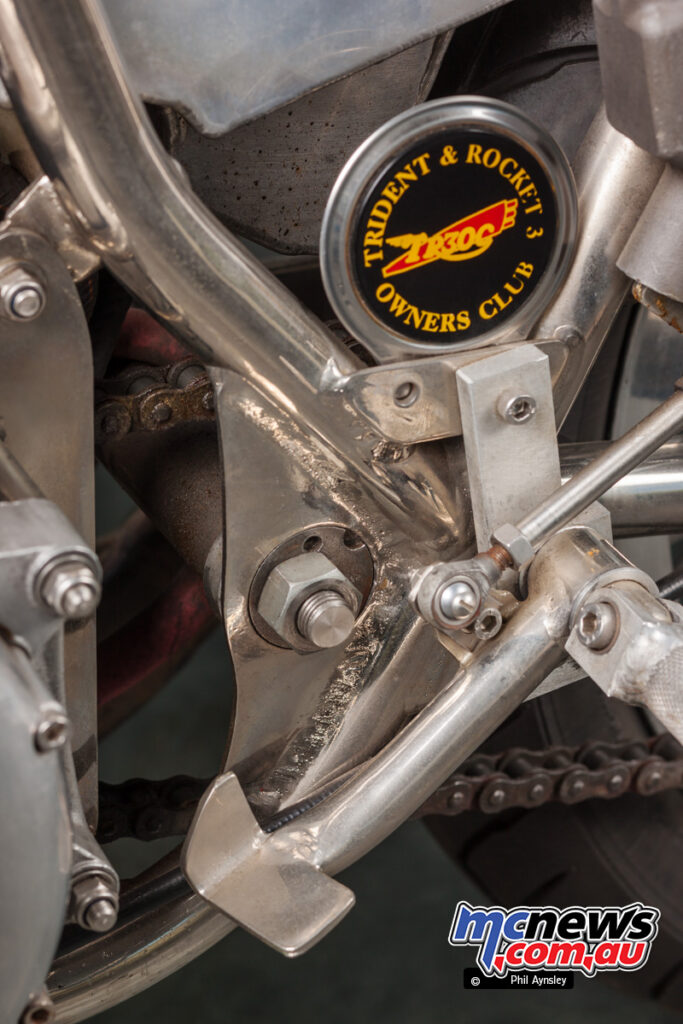
The history of this particular bike (owned by the National Motorcycle Museum in Nabiac) is not known but it is likely is was constructed in the late 1970s, if only due to its use of Amal Mk II carburettors which were released in 1978. Another factor pointing to a later build date is the use of different Betor forks to those supplied with the original Rocket III kits (which were from the company’s Competition Replica range). The Ceriani-looking forks on this bike more closely resemble the forks fitted to the later Japanese engined kits.
Source: MCNews.com.au
